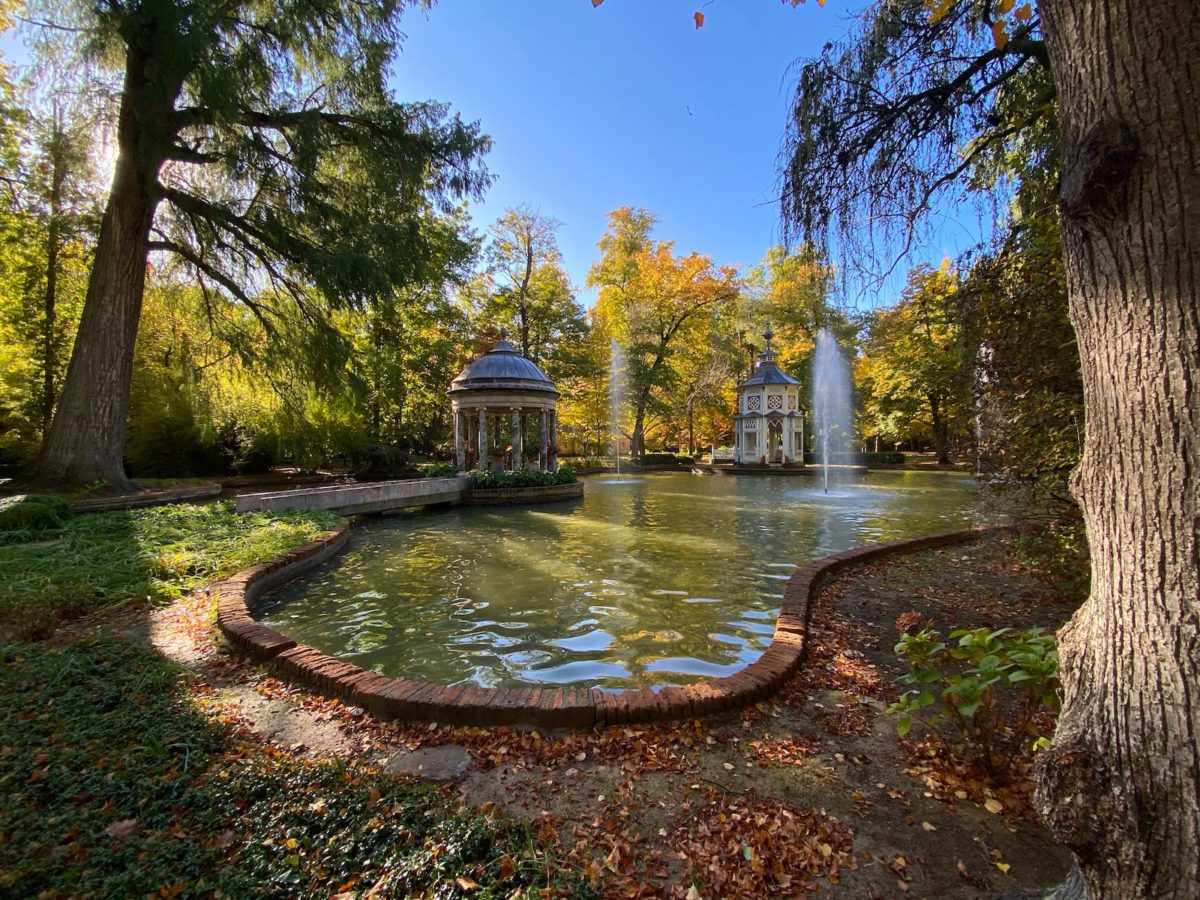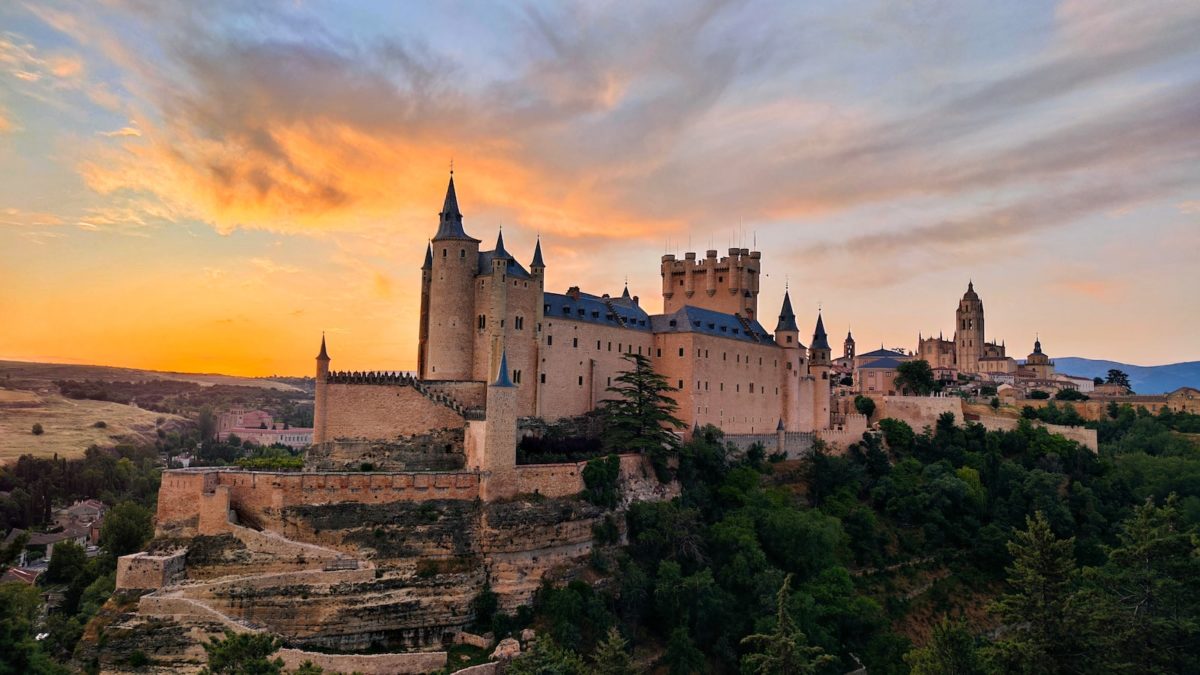If Madrid is a must for any trip to Spain, its surroundings are just as important.
What is called here the Comunidad de Madrid Madrid has a rich artistic and natural heritage that invites you to go beyond the limits of the capital to discover fabulous cities such as Alcala de Henares, home of Cervantes, Aranjuez known for its magnificent Royal Palace, the sites of El Escorial and Valle de los Caidos with their controversial history, without forgetting for nature lovers the Sierra de Guadarrama with its lot of outdoor activities in summer as well as in winter. In short, there are many things to see and do just a stone’s throw from Madrid…
Book a tailor-made trip to Spain with Evaneos
What to do and what to visit around the city of Madrid?
Within a radius of a hundred kilometers around the city…
Alcala de Henares
A few dozen kilometers from Madrid, the city of Cervantes (the author of Don Quixote) is a Unesco World Heritage Site for its old university and its historic districts. Rich in heritage and history, it is, by all accounts, a pleasant city to visit.
Aranjuez
South of the capital, this city is known in Spain for the many treaties that were signed there between the 17th and 19th centuries, its strawberry production, its famous concerto for guitar and orchestra, but also its Royal Palace and its gardens that look like the “local Versailles”. The city has a superb architecture which, together with its palace built at the end of the 16th century, has earned it a place on the UNESCO World Heritage List. A place not to be missed…

Avila
At almost 1,200 meters above sea level, Avila is a beautiful medieval city surrounded by walls. It is a Unesco World Heritage Site for its old center, its beautiful buildings and its extramural churches.
Chinchón
Chinchón is a large town of a few thousand inhabitants a few kilometers southeast of Madrid. If you pass by, don’t miss the beautiful Plaza Mayor with its old two- and three-story houses with balconies. It is representative of the architecture of the 17th and 18th centuries that can be found throughout the city, including the church of Nuestra Senora de la Asuncion, the convent of the Poor Clares and the remains of the castle burned down by Napoleon’s troops in 1808. Not far from there, Nuevo Baztan is quite similar and also deserves a stop.
El Escorial
Here is what is at the same time a monastery, a museum, a college, a necropolis and a royal palace joined together in an immense complex dating from the XVIth century in the municipality of San Lorenzo de El Escorial. This remarkable complex has been classified as a UNESCO World Heritage Site since 1984. Nearby, in the same municipality, we will continue our visit with the Valle de los Caidos which is a site that also deserves a stop.
Rascafria
This village perched at more than 1,000 meters above sea level in the Lozoya Valley is known for hosting the old monastery of El Paular on its outskirts. With its church, cloisters and garden-arboretum, it is worth a visit, especially since it is located at the foot of the Guadarrama mountain range, which is rich in natural discoveries and outdoor activities, including the Valdesqui winter sports resort, one of the most popular in the region.
Segovia
Segovia is located about 100 kilometers northwest of Madrid, at an altitude of more than 1,000 meters above sea level. It is known for its Roman aqueduct and its old town, both of which have been declared World Heritage Sites by UNESCO.

Sierra de Guadarrama
Here is a beautiful mountain range, partly classified as a national park, between Segovia and Madrid. Very popular, especially at weekends, because of its proximity to the capital, the area is home to a number of valleys, lakes and streams, forests and peaks over 2,000 meters, among which you can easily hike, ski, climb and many other outdoor activities.
Toledo
In the heart of Spain, perched on a rocky outcrop overlooking the Tagus River and the surrounding plain, the city of Toledo is the capital of Castilla-La Mancha after having been the capital of all of Spain for a time. Just 70 kilometers from Madrid, the city is a popular tourist destination for its magnificent historical and architectural heritage, including its famous Alcazar, which is a UNESCO World Heritage Site.
Valle de los Caidos
Located in the same municipality as El Escorial, this immense necropolis, with its basilica carved into the rock and its monumental cross, dates from the Franco era. It is dedicated in theory to all the dead of the civil war of 1936, although for many the place remains a controversial site of Franco’s rule, with Franco buried there until 2019, when his remains were moved to a cemetery in Madrid.
Weather, what time of year for a trip to the Madrid area?
The Madrid region has a semi-arid continental climate. The winters are rather moderate even if it freezes quite often, and the summers are very hot with daily temperatures often above 30°C.
April-June or September-early October are good times to visit the capital and its surroundings. For more details, it’s here…
For more information: www.spain.info
Hello! I’m Ben Fischer, a travel enthusiast who has journeyed far and wide to bring you unique and inspiring stories. Each destination is a new adventure for me, a chance to explore diverse cultures and share unforgettable experiences.
In my articles, I take you beyond mere descriptions of places. I share the encounters, special moments, and anecdotes that make each trip unique. My writing is an invitation to see the world through my eyes, blending practical tips with personal insights.
As a lifelong traveler, I approach each journey with respect and curiosity, eager to uncover the stories hidden in every corner of the globe.

